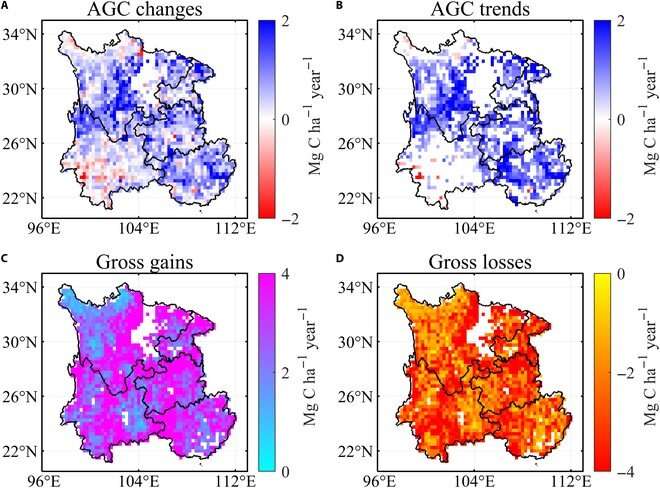This article has been reviewed according to Science X's editorial process and policies. Editors have highlighted the following attributes while ensuring the content's credibility:
fact-checked
proofread
Satellite data unlocks drought impact on southwest China's carbon cycle

Over the past four decades, Southwest China has been a major carbon sink, significantly mitigating anthropogenic CO2 emissions. However, recent severe droughts, especially from 2009 to 2013 and in 2022, have drastically reduced its carbon absorption capacity by affecting vegetation and biomass. This illustrates the region's susceptibility to climate-induced stressors, emphasizing the critical need for protective measures against environmental fluctuations.
In a new study published in the Journal of Remote Sensing, scientists have harnessed satellite and ground-based observations to uncover the significant impact of drought on carbon loss in Southwest China. This research marks a pivotal step in understanding the complex interactions between climate events and the carbon cycle, an essential component for maintaining the balance of our planet's climate.
The study utilized an innovative combination of satellite imagery and ground observations to meticulously analyze the effects of drought on the carbon dynamics within Southwest China. By integrating data from multiple sources, the researchers were able to observe and quantify the extent of carbon loss attributed to drought conditions. This approach not only highlights the vulnerability of the region's carbon stocks to climate variability but also sets a new benchmark in utilizing technology to monitor and understand ecological changes.
The findings underscore the importance of satellite data in providing a comprehensive and accurate picture of how natural disasters like droughts can alter the carbon balance, potentially leading to long-term shifts in the ecosystem and climate system. This research highlights the significant impact of ecological initiatives on improving carbon sequestration, offering a strategic model for addressing climate change. The achievements in Southwest China stand as a prominent example for worldwide environmental restoration endeavors.
Dr. Lei Fan, the study's lead researcher, emphasizes, "Our findings illuminate the resilience and potential of Southwest China's ecosystems to act as a substantial carbon sink, highlighting the success of government-led ecological restoration efforts."
By conducting a thorough analysis, the study illuminates the complex interactions within our planet's carbon cycle in response to environmental challenges. This provides essential knowledge for advancing climate science and devising effective management approaches.
More information: Lei Fan et al, Satellite-Observed Increase in Aboveground Carbon over Southwest China during 2013-2021, Journal of Remote Sensing (2024). DOI: 10.34133/remotesensing.0113
Provided by TranSpread




















